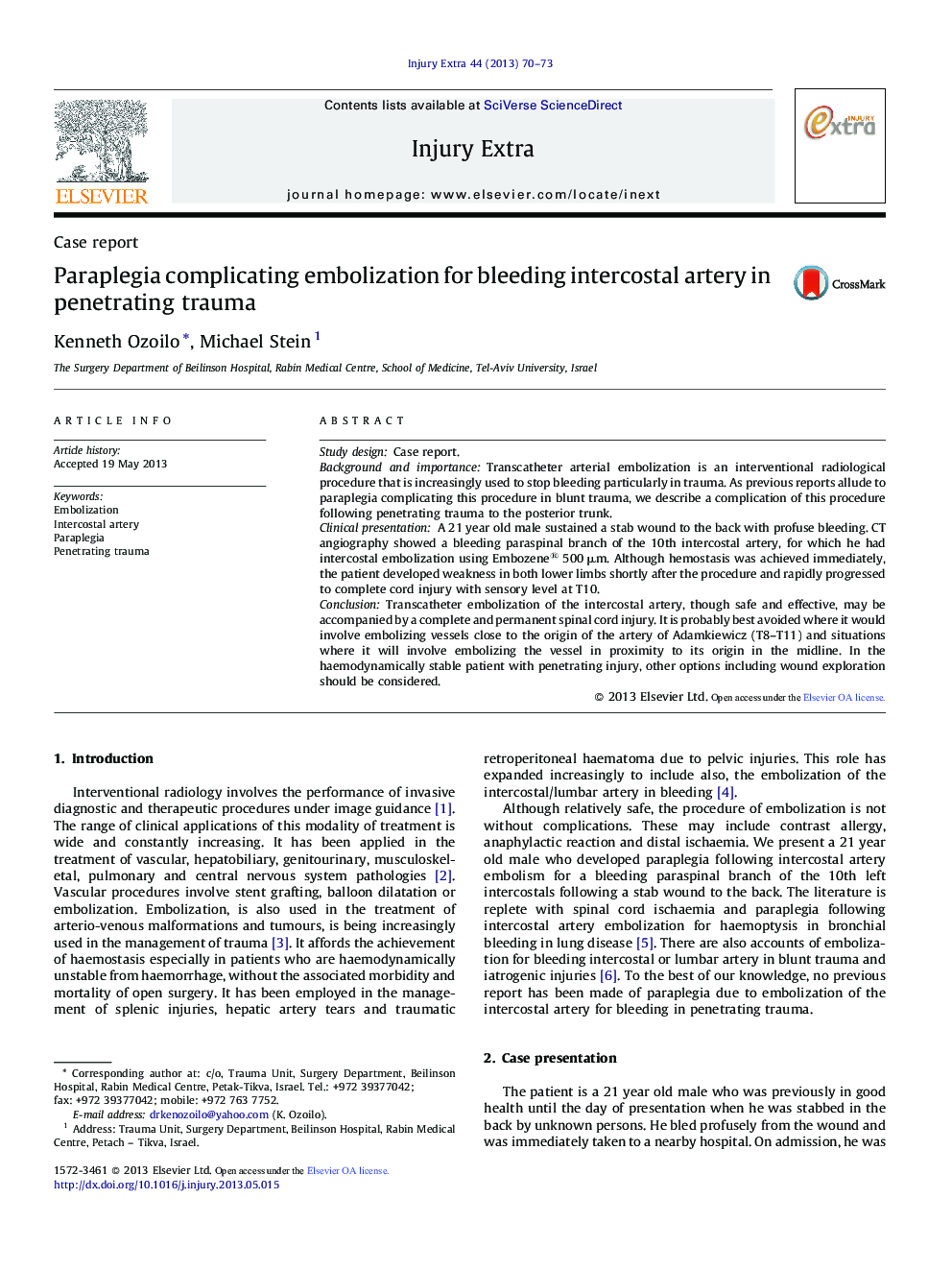| Article ID | Journal | Published Year | Pages | File Type |
|---|---|---|---|---|
| 3243431 | Injury Extra | 2013 | 4 Pages |
Study designCase report.Background and importanceTranscatheter arterial embolization is an interventional radiological procedure that is increasingly used to stop bleeding particularly in trauma. As previous reports allude to paraplegia complicating this procedure in blunt trauma, we describe a complication of this procedure following penetrating trauma to the posterior trunk.Clinical presentationA 21 year old male sustained a stab wound to the back with profuse bleeding. CT angiography showed a bleeding paraspinal branch of the 10th intercostal artery, for which he had intercostal embolization using Embozene® 500 μm. Although hemostasis was achieved immediately, the patient developed weakness in both lower limbs shortly after the procedure and rapidly progressed to complete cord injury with sensory level at T10.ConclusionTranscatheter embolization of the intercostal artery, though safe and effective, may be accompanied by a complete and permanent spinal cord injury. It is probably best avoided where it would involve embolizing vessels close to the origin of the artery of Adamkiewicz (T8–T11) and situations where it will involve embolizing the vessel in proximity to its origin in the midline. In the haemodynamically stable patient with penetrating injury, other options including wound exploration should be considered.
